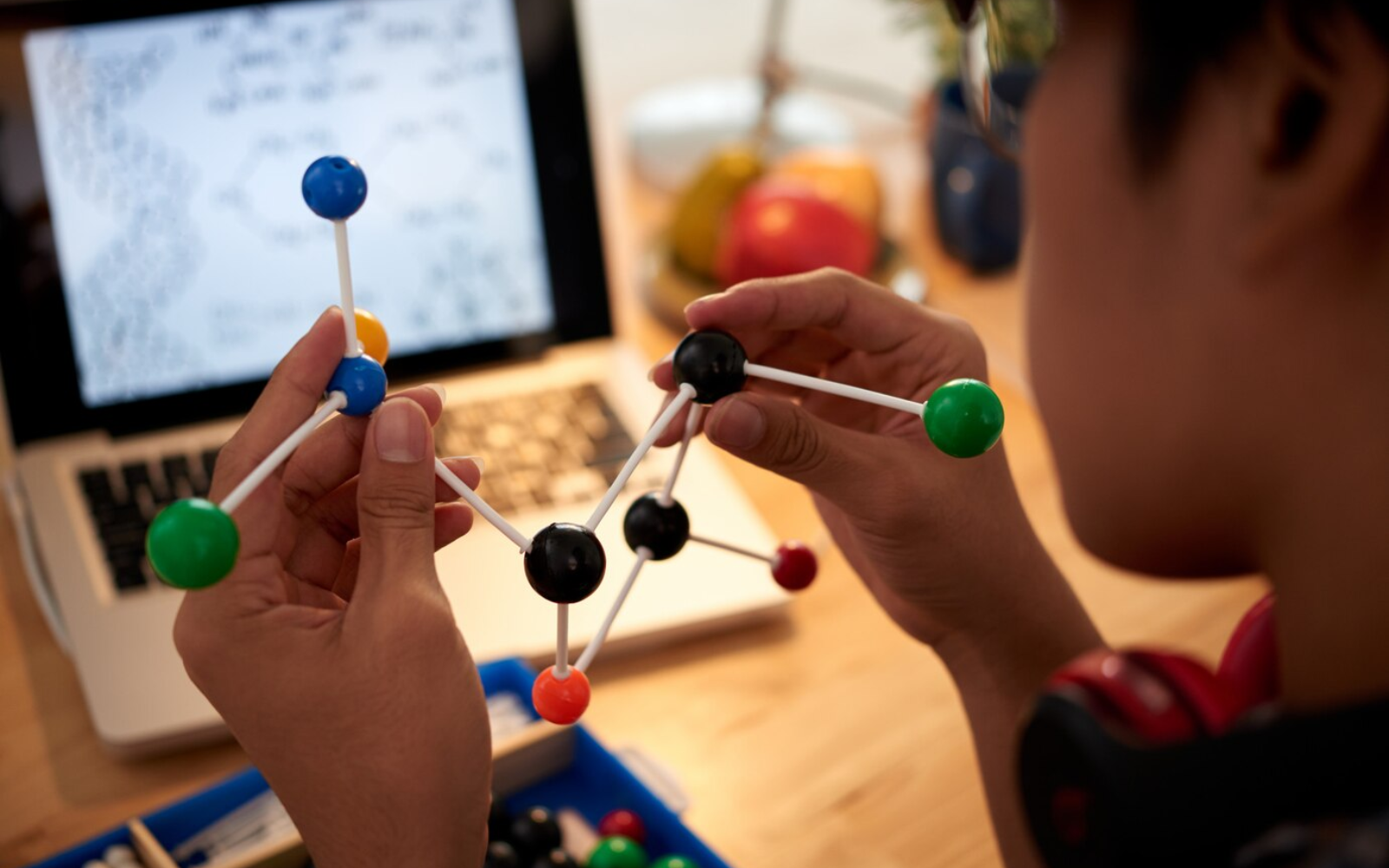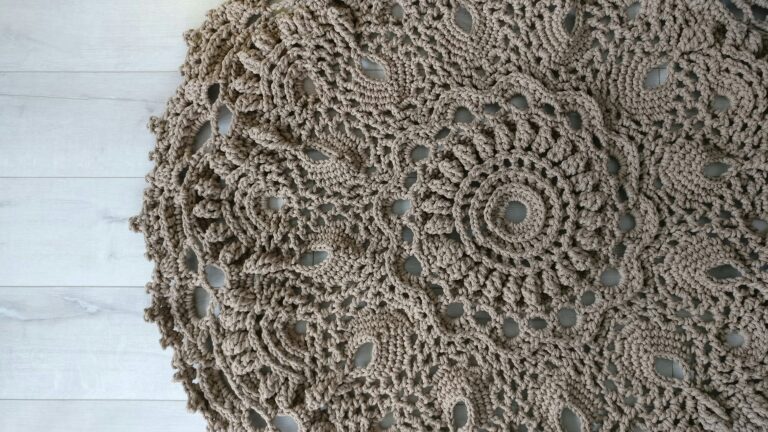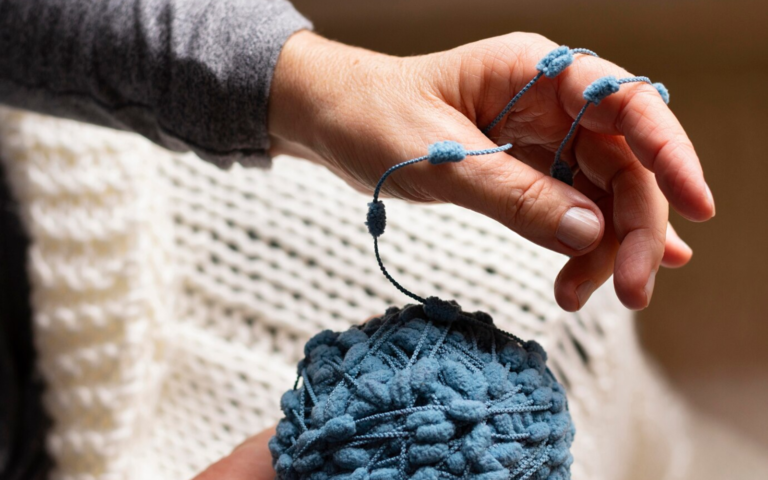Crafting Molecular Structures For School Project: 5 Innovative and Impactful Strategies
Crafting molecular structures for school projects stands as a cornerstone in the educational research of chemistry, bridging the gap between theoretical concepts and tangible understanding. This hands-on approach not only illuminates the intricate world of atoms and bonds but also serves as a dynamic tool for engaging students with the material world at a molecular level. The methodology behind crafting these models spans a range from simple DIY approaches utilizing everyday items to more sophisticated techniques such as 3D printing, each offering a unique lens through which students can examine and comprehend the complexities of molecular geometry.
The process of constructing molecular models plays a pivotal role in demystifying abstract chemical concepts, allowing students to visualize and manipulate the building blocks of matter. This direct interaction with molecular models fosters a deeper comprehension of chemical structures and the spatial relationships between atoms, laying a solid foundation for understanding chemical reactions and properties. Moreover, this tactile learning experience caters to diverse learning styles, ensuring that all students have the opportunity to grasp fundamental chemistry concepts in a manner that resonates with them.
Engaging in the creation of molecular structures not only enhances students’ understanding of chemistry but also nurtures critical thinking and problem-solving skills. As students decide on the appropriate materials to represent different elements and ponder over Finest way to illustrate bonds and molecular shapes, they embark on a journey of discovery and creativity. This active learning process encourages students to pose questions, seek answers, and apply their knowledge in a hands-on context, making the learning experience both meaningful and memorable. Moreover, the versatility of methods available for crafting molecular models ensures that this educational activity is accessible to all. Whether utilizing low-cost, readily available materials for informal models or harnessing the Strenght of technology through 3D printing, educators can tailor the project to fit their instructional goals and resources. This flexibility not only makes the construction of molecular structures feasible for a wide range of educational settings but also allows for customization to meet the specific learning objectives and interests of the students.
Understanding the Basics of Molecular Geometry
Molecular geometry is fundamental to the study of chemistry, providing insight into the physical properties and reactivity of molecules. At its core, molecular geometry concerns the three-dimensional arrangement of atoms within a molecule, determined by the sorts of chemical bonds and the distribution of electrons around the nucleus. Grasping these concepts is for students to appreciate how molecular shapes influence everything from the boiling point of a substance to its biological activity. The Valence Shell Electron Pair Repulsion (VSEPR) theory offers a theoretical framework for predicting the shapes of molecules based on the idea that electron pairs repel each other and thus, arrange themselves as far apart as possible around the central atom. This theory helps students understand why water has a bent shape or why methane is tetrahedral, linking molecular geometry to observable chemical properties. Through the crafting of molecular structures, these abstract principles become concrete, allowing students to visualize and comprehend the spatial relationships that dictate molecular shapes.
In terms of molecular geometry through hands-on projects not only solidifies students’ understanding of chemical bonds and structures but also introduces them to the concept of isomerism, where compounds with the same formula can have different arrangements of atoms and thus, different properties. By modeling various isomers, students can see firsthand how the arrangement of atoms affects the molecule’s functionality, an important concept in organic chemistry and biochemistry. Moreover, the act of building molecular models challenges students to think critically about how atoms are bonded and encourages them to apply their knowledge of valency and electron configuration. This hands-on approach facilitates a deeper engagement with the material, as students must consider the geometric constraints and electron repulsions that govern molecular shapes. Through this process, they develop a more nuanced understanding of the forces that shape the microscopic world, preparing them for more advanced studies in chemistry and related fields.
Benefits of Crafting Molecular Structures For School Projects
Crafting molecular structures for school projects offers a multitude of educational benefits, serving as a bridge between abstract theoretical knowledge and tangible, real-world application. This active engagement with the subject matter enhances students’ understanding of complex concepts, making chemistry more accessible and less intimidating. By bringing molecules to life through models, students can visually and physically grasp the intricacies of molecular geometry, fostering a deeper appreciation for the beauty and logic of chemical structures. The hands-on nature of crafting molecular models promotes active learning, a pedagogical approach that encourages students to take an active role in their education. This method has been shown to improve retention and understanding, as it requires students to synthesize information, apply concepts, and physically manipulate materials to represent chemical structures. Active learning through model crafting also caters to various learning styles, including visual, kinesthetic, and tactile learners, ensuring that all students have the opportunity to engage with the content in a way that best suits their individual learning preferences.
Moreover, the process of designing and building molecular models nurtures essential life skills such as creativity, critical thinking, and problem-solving. Students are challenged to think creatively as they determine how to best represent different elements and bonds, applying their knowledge of chemistry to solve practical problems. This creative problem-solving process not only reinforces their understanding of molecular structures but also develops skills that are valuable beyond the chemistry classroom, preparing students for future challenges in any field. Additionally, crafting molecular structures fosters collaboration and communication among students. Working together on model projects encourages teamwork, as students must share ideas, divide tasks, and collaborate to achieve a common goal. This collaborative environment enhances the learning experience, allowing students to learn from each other and develop strong communication skills as they explain their reasoning and thought processes. Through these interactions, students not only build their chemistry knowledge but also cultivate important social skills that will serve them well in their academic and professional lives.
Informal Modeling: A Cost-Effective Approach
Informal modeling of molecular structures offers a cost-effective and accessible way for students to engage with the complexities of molecular geometry. Utilizing everyday materials such as polystyrene balls, pipe cleaners, and toothpicks, students can create detailed models that visually represent the arrangement of atoms within a molecule. This approach democratizes the learning process, making it possible for every student to participate in hands-on chemistry learning regardless of the school’s budget or resources. The simplicity of informal modeling lies in its use of common household or classroom items to mimic the components of molecular structures. For instance, colored balls can represent different atoms based on their size and color, while connectors like toothpicks or pipe cleaners illustrate the bonds between them. This method allows students to physically construct and manipulate models, providing a clear visual and tactile representation of concepts such as bond angles, molecular shapes, and atomic arrangements.
Moreover, informal modeling encourages creativity and innovation, as students are challenged to think outside the box and use available materials in novel ways to represent complex molecular structures. This creative process not only makes learning more engaging and enjoyable but also allows students to develop a deeper understanding of the material by actively constructing their own knowledge. As they experiment with different materials and configurations, students gain insight into the versatility and adaptability of molecular structures, mirroring the dynamic nature of chemistry itself.
Additionally, informal modeling fosters an inclusive learning environment where students can collaborate, share ideas, and learn from one another. By working together to build models, students enhance their communication skills, discussing concepts and problem-solving strategies as they navigate the challenges of accurately representing molecular structures. This collaborative effort not only strengthens their understanding of chemistry but also builds a sense of community and teamwork within the classroom, enriching the overall educational experience. Crafting molecular structures for school projects, whether through informal modeling or more advanced techniques, offers aengaging and effective means of bringing the abstract concepts of chemistry into the concrete realm, providing students with a hands-on experience that deepens their understanding and appreciation of the subject. Through the act of crafting molecular structures, students are not just learning about chemistry; they are experiencing it in a way that is both educational and profoundly impactful.
Advanced Techniques: 3D Printing Molecular Models
The advent of 3D printing technology has revolutionized the way educators and students approach the crafting of molecular structures for school projects. This advanced technique allows for the creation of precise, detailed models that accurately represent the complexities of molecular geometry. By using computer-aided design (CAD) software such as Blender, students can digitally construct models of molecules, offering insights into not only the shape and size of molecules but also the spatial relationships between atoms. 3D printing enables the translation of digital models into tangible objects, providing a hands-on learning experience that is both engaging and informative. This process involves layer-by-layer construction of the model, allowing for a level of detail and accuracy that is difficult to achieve with manual crafting methods. As students design their models, they gain valuable skills in technology and engineering, preparing them for the future in STEM fields.
Furthermore, the use of 3D printing in crafting molecular structures introduces students to modern manufacturing techniques and the applications of 3D printing in scientific research and development. This real-world connection enhances the educational value of the project, showing students how the concepts they are learning in class are applied in professional scientific communities. Despite the many benefits, it’s important to consider the accessibility of 3D printing technology. Schools and educators must weigh the costs and logistics of incorporating 3D printing into their curriculum. However, for those able to utilize this technology, it offers a strong tool for deepening students’ understanding of molecular structures and the principles of chemistry.
Classroom Activities: Building Simple Molecules Together
Integrating the construction of molecular models into classroom activities provides a collaborative and interactive way to learn about molecular geometry and chemical bonding. Simple projects can be designed for students to work together in small groups, fostering a sense of teamwork and cooperation. These activities can range from constructing models of basic molecules like water and carbon dioxide to more complex structures such as proteins or DNA. Teachers can facilitate these activities by providing a variety of materials for students to use in building their models, including both traditional modeling kits and everyday items like marshmallows and toothpicks. By challenging students to use these materials to represent different sorts of atoms and bonds, educators can stimulate critical thinking and creativity.
Classroom activities that involve crafting molecular structures also provide an excellent opportunity for formative assessment. Educators can observe students as they work, identifying misconceptions and areas of difficulty in real-time. This immediate feedback allows teachers to address any issues on the spot, enhancing the learning experience. Moreover, presenting completed models to the class can serve as a valuable teaching moment. Students can explain their models, discussing the reasoning behind their construction choices and the chemical principles their models illustrate. This not only reinforces their own understanding but also enriches their classmates’ learning, creating a dynamic and interactive educational environment.
Benefits of Crafting Molecular Structures For School Projects
The practice of crafting molecular structures for school projects extends beyond the immediate educational benefits, offering a multifaceted approach to learning that touches on various essential skills. Firstly, it demystifies the abstract nature of chemical concepts, allowing students to visualize and grasp complex ideas more effectively. This tangible connection to the theoretical material can enhance retention and foster a deeper understanding of chemistry. Secondly, the hands-on nature of building molecular models engages students actively in their learning process. This engagement is critical in fostering a curiosity-driven approach to education, where students are motivated to search and inquire beyond the classroom’s confines. Such an approach not only enriches their educational experience but also instills a lifelong love of learning.
Furthermore, crafting molecular structures encourages the development of critical thinking and problem-solving skills. As students determine how to represent molecules accurately, they must apply their knowledge of chemistry, think creatively, and troubleshoot any issues that arise. These skills are invaluable, preparing students for success in various future endeavors, whether in academic settings or in the workforce. Lastly, these projects promote collaboration and communication among students. Working together towards a common goal, students learn to articulate their ideas, listen to others, and integrate diverse perspectives. This collaborative learning environment not only enhances the educational experience but also helps students develop essential social skills, preparing them for collaborative work in any future. Finally, crafting molecular structures for school projects offers a rich, multifaceted educational experience that benefits students in numerous ways. From deepening their understanding of complex chemical concepts to fostering essential life skills, the impact of these projects extends far beyond the classroom, preparing students for a lifetime of learning and success.
Enhancing Engagement and Learning Through Interactive Molecular Construction
For educators and students alike, the introduction of hands-on, interactive activities into the curriculum can significantly enhance both engagement and educational outcomes. Crafting molecular structures as part of school projects is an excellent example of such an activity. This approach allows students to physically manipulate the components of molecules, offering a tangible connection to otherwise abstract concepts in chemistry and biology.
By constructing molecular models, students can better visualize the spatial relationships and interactions between atoms and bonds in three-dimensional space. This hands-on method helps demystify complex molecular geometries, making it easier for students to comprehend how molecules fit together and how they function within larger chemical structures. Moreover, interactive molecular construction can cater to various learning styles, particularly benefitting kinesthetic learners who thrive by touching and moving physical objects to understand new information.
The process of building these models also encourages critical thinking and problem-solving skills. Students often need to figure out how to best represent different types of bonds and molecular configurations using limited resources. This challenge requires them to apply logical thinking and adaptability, skills that are invaluable in both academic and real-world settings. Furthermore, this activity promotes teamwork and communication as students frequently work in groups to construct complex molecular structures. Through collaboration, students share knowledge, debate ideas, and collectively solve problems, fostering a supportive learning environment.
In addition to enhancing understanding of molecular structures, this hands-on approach also sparks curiosity and inspires further exploration into scientific topics. As students handle different elements and construct various molecular forms, they often develop questions and ideas that go beyond the curriculum. This natural curiosity can lead to independent research, projects, or experiments, thereby deepening their knowledge and interest in science.
Teachers can further enrich this learning experience by incorporating technology. For instance, using software that models molecular structures in 3D can complement the physical models, providing students with a multi-faceted understanding of the subject. Such technologies can simulate how molecular structures interact in different environments, such as changing temperatures or pressures, offering insights that are difficult to achieve with static physical models alone.
Lastly, the flexibility of constructing molecular models means that this activity can be tailored to suit various educational levels. Simpler models can be used for younger students to provide a basic introduction to molecular geometry, while more complex constructions can challenge older students, pushing them to delve into intricate details of chemical bonding and molecular interaction. Incorporating interactive molecular construction into school projects not only helps demystify complex scientific concepts but also enhances students’ engagement, fosters essential academic skills, and encourages a deeper interest in science. This method proves invaluable in creating a dynamic and supportive learning environment where students can thrive.
See More At: woolen8wonders.com







